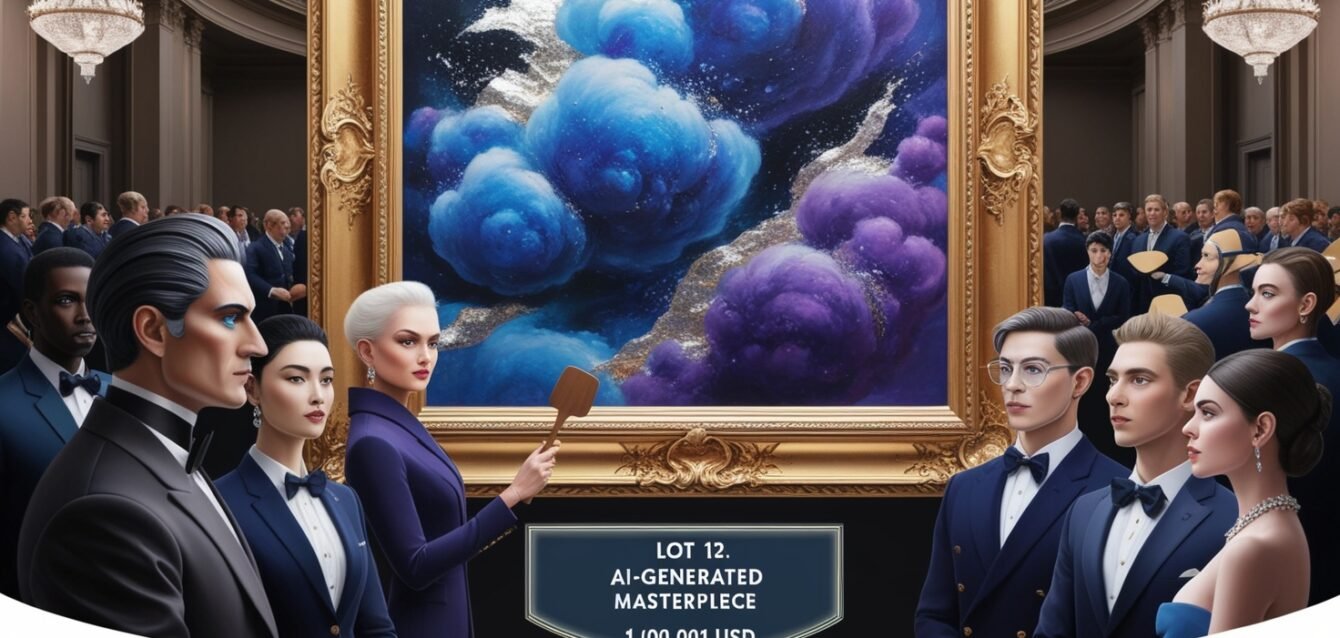The Rise of AI in the Art World
Artificial intelligence has begun to play an increasingly significant role in the art world, marking a transformational period in creativity and innovation. Over the past few years, AI-generated artworks have emerged not only as a novel concept but also as a respected medium, intertwining the realms of technology and artistry. Artists and technologists have started to collaborate, utilizing advanced algorithms and machine learning techniques to create unique and thought-provoking works. The partnership between these two fields fosters an environment where traditional art forms are reimagined through computational processes.
The history of AI in art can be traced back to the 1960s when early artists like Harold Cohen developed computer programs capable of generating pieces autonomously. This pioneering work laid the groundwork, but it wasn’t until recent advancements in technology that AI gained traction as a legitimate artistic tool. Techniques such as generative adversarial networks (GANs) and deep learning have enabled AI to analyze vast datasets of existing art, allowing it to produce pieces that exhibit style, emotion, and complexity akin to human creators.
Numerous milestones punctuate the evolution of AI-generated art, leading to the landmark sale of an AI painting for over one million dollars. Noteworthy examples include the work of artists such as Sougwen Chung and Refik Anadol, who incorporate AI into their artistic practices. They harness the capabilities of AI to explore themes of identity, perception, and the nature of creativity itself, provoking discussions about authorship and originality in art. As the technology continues to evolve, the landscape of the art scene will likely experience further transformation, prompting both admiration and critical reflection from audiences.
The Auction Event: From Creation to Sale
The auction event that saw an AI-generated painting achieve over one million dollars has become a landmark moment in the art world. The painting, titled “Edmond de Belamy,” represents a fascinating blend of artistic tradition and innovation. It was conceived using a sophisticated algorithm developed by the Paris-based art collective Obvious, which employed a Generative Adversarial Network (GAN) to produce the artwork. This technique involves pitting two neural networks against each other, allowing one to create images while the other evaluates their quality, resulting in a unique composition that challenges traditional norms in artistic creation.
The auction took place at Christie’s, one of the world’s leading auction houses, infused with an atmosphere of excitement and curiosity. An eclectic mix of art enthusiasts, investors, and tech advocates gathered, drawn by the novelty of authenticating an artwork created by artificial intelligence. The event’s marketing strategy played a crucial role; it showcased the intersection of technology and creativity, appealing to a diverse audience eager to witness this historical moment. High-profile publicity invited both seasoned art collectors and new participants, highlighting the innovative nature of AI in the art landscape.
Implications for Artists and the Art Market
The recent sale of an AI-generated painting for over one million dollars marks a significant moment in the intersection of technology and creativity. This groundbreaking event carries substantial implications for traditional artists, as well as the broader art market. One of the primary effects may be the redefinition of art ownership, as the distinction between human-made and machine-generated art becomes less clear. Artists may find themselves competing with algorithms that can produce impressive works in a fraction of the time it takes a human artist.
Furthermore, the perception of creativity is evolving in the age of artificial intelligence. While creativity has traditionally been viewed as an intrinsic human trait, the emergence of AI as a tool for artistic expression challenges this notion. Questions surrounding the authenticity of AI-created art arise, leading to varied reactions from the art community. Some embrace AI as an innovative collaborator, potentially enriching the creative process, while others express skepticism regarding the emotional depth and intent behind these works.
This technological shift could also induce changes in the valuation of artworks. As more AI-generated pieces enter the market, collectors may need to reassess their criteria for valuing art. If a painting generated by an algorithm can fetch a higher price, traditional artists may worry about their own marketability. Conversely, this situation could stimulate a renewed appreciation for human artistry, as collectors seek to distinguish between machine and human creations.
As the art industry grapples with the implications of AI-generated art, it is clear that both enthusiasm and skepticism will shape the discourse. The dialogue surrounding authenticity, creativity, and valuation will be critical in navigating this new landscape, as art continues to evolve alongside technology.
The Future of AI and Art: What Lies Ahead?
The intersection of artificial intelligence and the art world is continuously evolving, prompting both excitement and apprehension among artists, collectors, and technologists. As we look to the future, several trends and innovations in AI-driven art creation appear poised to shape this dynamic landscape. Among these developments, we can anticipate a growing sophistication in AI algorithms that can produce works of art that challenge traditional norms and aesthetics. Emerging tools will empower artists, allowing them to explore new methodologies and collaborative processes, integrating AI as a creative partner rather than a mere tool.
Furthermore, the dialogue surrounding AI in art is likely to expand, encouraging cross-disciplinary collaboration between artists, programmers, and ethicists. This collaboration could lead to fresh perspectives on the role of creativity, prompting questions about authorship and the definition of art itself. As AI-generated works gain acceptance, it is crucial to consider the implications of originality, copyright, and intellectual property. How will society navigate these emerging challenges, especially as AI becomes increasingly capable of producing culturally significant artworks?
Ethical considerations play a vital role in the future of AI and art. As technology advances, the potential for misuse or exploitation grows, thus prompting important conversations about the responsibilities of creators and consumers alike. Ensuring that AI is employed as a means to enhance, rather than undermine, human creativity will be critical. Moreover, the diversification of voices in AI art—fostering inclusion and equitable access to these technologies—will impact how art evolves in the future. The path forward should strike a balance between technological innovation and preserving the core values of artistic expression.
As we move deeper into this evolving terrain, the relationship between technology and artistic expression will undoubtedly transform, paving the way for new opportunities and challenges in the art world.




